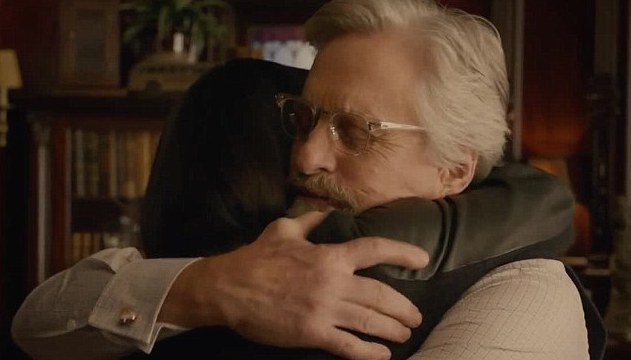Out of all the requests for article topics we’ve gotten, from tips on worldbuilding to character work to theme, the most common question has always been how writers can make sure their emotional scenes matter. If readers are bored throughout the most meaningful parts of a book, or if they feel sappy or overdone, the entire book is robbed of its meaning. What’s the point of a character arc if the deepest part of your protagonist’s journey doesn’t land? Why even have a theme if the moment it’s said out loud fails to connect with the readers? Why write dynamic relationships if the moments where those connections grow, break off, or change only make your readers cringe?
It’s no exaggeration to say that the entire meaning of your book hangs on the execution of those scenes. And it’s because of how multilayered this issue is that we haven’t addressed this topic directly. But today, in the first article on our series featuring the Marvel Cinematic Universe, we’re tackling it head-on, starting with a familiar case study we’ll look at under a new light, Ant-Man.
Ant-Man
Scott Lang is a recently-released criminal who has promised that his life of crime is done forever. But all of that changes when his ex-wife tells him he won’t be able to see his young daughter Cassie until he starts paying child support. His public scandal is making it impossible to hold down a job, and even splitting rent he can’t make enough to support himself. He would do anything to see his daughter again — even if it means accepting a shady offer from a wealthy business tycoon to engage in some less-than-legal activities.
Hank Pym and his previously-estranged daughter, Hope, are on a mission to steal back his technology from his own company. He was previously voted off the board by Hope and his protege Darren Cross, who struck a deal with terrorists he plans to sell Hank’s technology to. Once Hope found out about the deal, she allied with her father to steal his technology back.
But Hope and Hank begin to grate on each other, and a wedge is driven between them by Hank’s inexplicable and seemingly irrational insistence that Scott be the one to execute the mission when Hope is both better trained and more equipped than he is. Hope sees it as an insult to her competence, while Hank is secretly terrified of losing Hope. Years ago on a similar mission, he was forced to watch his wife die, and would do anything to protect his daughter from a similar fate.
As their conflict starts to make working together nearly impossible, both recognize something has to change. It’s Hank who takes the first step toward reconciliation, by telling his daughter how her mother died for the first time. He and his wife used to run missions together just like the one he’s sending Scott on, until one day his technology malfunctioned and his wife sacrificed herself to save him, preventing a war and countless other deaths in the process.
And it’s that conversation, through their tears, that finally reconciles Hank and his daughter after decades of bitterness and resentment. It brings out the father-daughter theme that runs throughout the entire movie more clearly than any other scene and acts as a promise from the writers to the audience that, no matter what happens, Scott and Cassie will someday reunite. Rather than seeming forced or sappy, it is a well-earned moment of meaning in an otherwise carefree and comedic film. And it’s intentionally written scenes like this that give stories their heart.
Why it Worked
Ant-Man is meant to be a lighthearted movie. It’s almost a comedy due to the humor the protagonist brings to each scene, and the side characters are some of the funniest in the Marvel Cinematic Universe. Trying to cram an emotional scene like the one above into a movie meant to be largely comedic is one of the fastest ways to turn a charming film into a sappy comedy trying too hard to be heartfelt.
But somehow Ant-Man avoids this trap entirely.
And it’s all because the writers followed a simple principle that most excessively dramatic stories miss: rarity makes value. This goes for diamonds and precious metals, but also emotional moments in your book.
Almost every soap-opera-like book or TV show has something dramatic and emotional happen every chapter (or episode). Each page, a new misunderstanding, backstory revelation, or exciting event drives their characters to tears or fury. It becomes so regular that it is expected and thus tiresome. The scenes lose their impact and often become irritating because the author still writes as though we’re expected to be invested in the character’s newest emotional rollercoaster when we only just stumbled off the last one. These writers hope to keep the readers’ interest by writing one heart-jerking scene after another, rather than trusting their audience to be patient through the quieter buildup which allows these emotional scenes to have impact.
Ant-Man is an excellent example of this principle. I can only recall really one or two scenes that were intended to be written as genuinely moving, touching on themes that had been built on much more quietly throughout the entire two-hour runtime. That’s why the scene with Hope and her father is so meaningful and doesn’t require a joke to make it bearable. And it’s also why Ant-Man was able to get away with writing a scene like this in the middle of a comedic action-adventure movie. The writers didn’t include even five of these scenes and expect us to be just as invested as them as we were the first time. Instead, they selected just one moment that they believed would deliver the most impact and communicate the father-daughter theme the most clearly, and allowed their characters to grow teary while reminiscing on the life of a lost loved one.
The rarity of the emotional moments in that movie is what makes them so meaningful without weighing down the lighthearted tone of the rest of the movie. So if you want your emotional moments to hit just as hard, make sure that they are as rare as you can manage, considering the plot and genre. A serious action-adventure drama will have more meaningful scenes than a lighthearted comedy, but both should have at least a few to ensure their themes come across with impact.
To decide what moments to let your characters’ emotions explode in anger or tears, rather than leaving them bubbling under the surface, ask yourself which moments you want your readers to remember like no others. Highlight only the moments of most stress, tension, and suspense with emotional monologues or drastic actions taken in the heat of the moment. Think of your emotional moments like gems that are only as precious as they are rare, and you will write emotional scenes that your readers will never forget.



Let us know in the comments:
What books have you noticed have way too many emotional scenes? How many moments like this one do you have planned for your current WIP?


Hi! My name is Mara, and I’m a Christian artist, violinist, and blogger. I remember the day that I decided that I would learn something new about what makes a good story from every book I picked up — whether it was good, bad, or a mixture of both. I use this blog as a way of sharing some of the tips and tricks I’ve learned, and highlight which books, cartoons, and movies have taught me the most about writing an awesome story.


Hey! This article was like an actual message from providence- exactly what I needed to hear! I actually love y’all’s blog, it’s my weekly “gosh, they know they’re talking about” moment.
In my current WIP I have a scene where my character is essentially fired from his team after betraying them(against his will, but they don’t care about that.) Later, one of his former teammates find him on the streets to invite him back, and gives a somewhat emotional speech. The very next scene is my main character going to his former Headquarters to ask to be let back in, an equally emotional moment. Apart from each other, each scene is great, and each has some awesome dialogue. But they feel boring and repetitive right next to each other. I’ve considered combining the scenes, but that takes out a lot of character dynamics that I love
Sorry for the long comment, but do you have any suggestions on fixing the problem?
Awww, thanks! You’re so kind!
For your question: if you have a multi-perspective story, consider making these scenes a sandwich to the climax of someone else’s arc, or even a cut to the villain’s perspective or an interlude along those lines. If you can’t do that, it makes me wonder if some of the relationship dynamics could be more unique. The character who invites him back should have a completely different relationship with him than the character he meets at HQ to be let back in, making the flavor of those two scenes completely different. But if your relationships are still really good, it’s possible you should focus on a progression. Maybe the guy who’s rejoining your group agrees in the first scene only hesitantly, and then grows to embrace his old friends whole-heartedly by the end of the second scene. Perhaps the first character is still somewhat skeptical that they’ll be able to work together going forward — either because they still feel guilt for what happened to their friend or because they’re not entirely convinced he’s innocent — and the second scene has none of that reserve. Or you could switch it the other way around. I’m actually going to be talking about a concept that could be helpful next week, but in the meantime if you want to send over more specifics and have a more in-depth discussion, feel free email us at thestoryfortressblog@gmail.com.
Thanks so much for the intriguing question. It’s making me excited for your work and I hope you can see it through to the end. If you ever hit a snag or just want someone to help you brainstorm, don’t hesitate to reach out!
Thank you! I think I’m going to try the interlude route- this is really helpful! I’ll definitely read what you put out next week- honestly, I look forward to Fridays because your blog is so insightful! Thanks again!
Oh wow, thank you so much! I’m glad this has been helpful and I can’t wait to see where your writing takes you! 🙂
Mara: Make emotional moments rare.
Meanwhile, me, with my five or six betrayals and dozen or so deaths in a single book: um…
Haha! That’s all right because of the genre. Since you’re writing fantasy/drama, your readers are more likely to put up with that many emotional moments. But still keep in mind that the more you’re able to limit them, the harder they’ll hit for your audience.